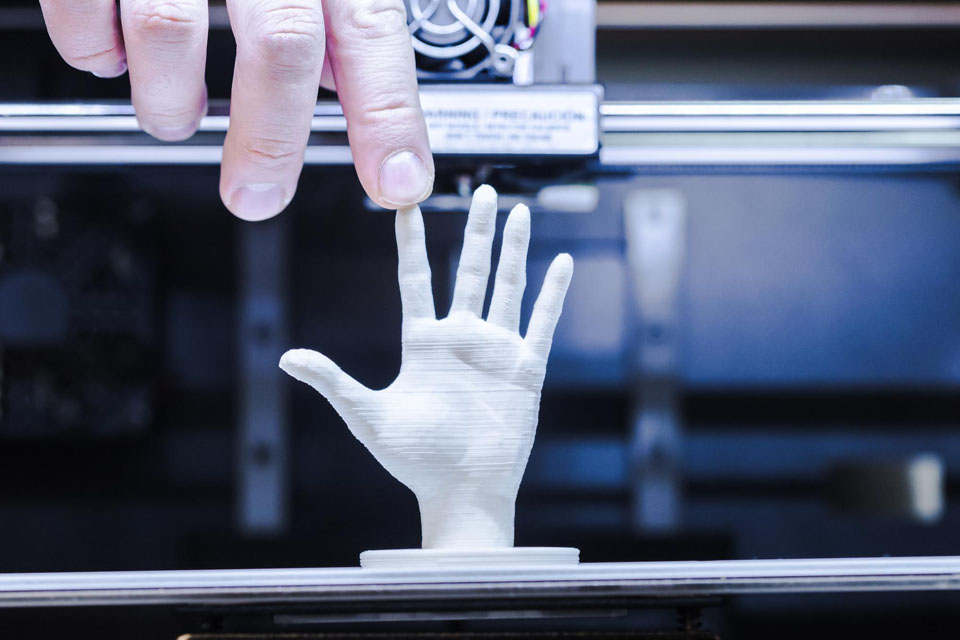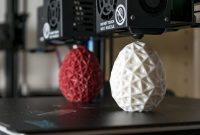Businesses may use 3D printing to join Industry 4.0. 3D printing technologies are transforming manufacturing lines and supply networks and producing digital transformation. Fused Deposition Modelling (FDM) and Selective Laser Sintering (SLS) are techniques used by many commercial 3D printers.
FDM is the most widely utilized 3D printing method, while SLS is the second most often used. However, it would help if you did not choose between FDM and SLS 3D printing based on market share or the number of installations. Instead, discover the key distinctions between these commonly used additive manufacturing processes.
FDM 3D Printing (Fused Deposition Modeling)
The material extraction process enables FDM to create physical components from digital information. The printer melts the raw material and then pushes it out of a tube as a thread. The tool places the filament on a build base or builds the tray layer by layer until the component is completed according to the digital file.
When using an FDM 3D printer, you can select from various materials. Traditional materials like PLA and ABS may be utilized with FDM 3D printers at home. TPU, PET, Nylon, and PETG are examples of high-performance materials that may be utilized with industrial-grade FDM 3D printers.
FDM is often called an additive manufacturing method that is inexpensive to learn. FDM is utilized in numerous industries and is popular among artists, hobbyists, students, and enthusiasts. Businesses like FDM because it speeds up production and testing while keeping printing prices low.
SLS 3D Printing (Selective Laser Sintering)
SLS can create solid pieces by precisely fusing powdered materials. In an SLS 3D printer, a high-powered laser is used to “sinter” the material. Pieces join together to form the component during the sintering process. Furthermore, the unbonded powdered material holds the part while it is printed.
Workers provide ample time for the component to cool in the construction room when it is completed. They leave the construction room and start post-processing. They apply specific approaches, tools, and solutions during post-processing to enhance how the final portion looks, feels, and operates.
When using an SLS 3D printer, you can use various types of nylon. SLS 3D printing uses Polyamide 12 (PA 12) or Nylon 12. However, added glass, carbon, or aluminum materials can improve the material’s mechanical and heating properties.
The Key Differences Among FDM and SLS 3D Printing
Easy to Use
FDM is a simple 3D printing technology, but SLS is one of the more difficult 3D printing methods. Desktop FDM 3D printers are simple for amateurs, artists, and anyone with less experience.
However, they can safely utilize an SLS 3D printer if placed in a large room with good airflow. They must also adhere to several best practices to keep SLS 3D printing more secure and less hazardous to health and safety. As a result, most firms engage qualified and experienced personnel to operate their SLS 3D printers.
Printing Prices
As previously stated, FDM is a cost-effective 3D printing process. Several FDM printers exist, including laptops, tabletop printers, and industrial units. However, an SLS 3D printer costs more than $5,000. Furthermore, the chemicals used in FDM 3D printing are less expensive than those used in SLS 3D printing. As a result, companies and individuals choose FDM to reduce their printing expenses significantly.
How Does Fast Printing Work?
The time it brings a 3D printer to manufacture a component depends on various factors, including the object’s size, the materials used, and the temperature of the tip. Furthermore, newer 3D printers produce results faster than older ones. SLS 3D printers can print up to 50mm per hour, whereas FDM 3D printers can print from 50 to 150mm per hour. As a result, FDM is a superior method of reducing printing time than SLS.
Material Alternatives
Engineers frequently use nylon, an industrial material, when creating parts or samples with an SLS 3D printer. However, various substances for SLS 3D printing are available, including PA 11, PA 12, PA 6, and TPU.
When utilizing an FDM 3D printer, you can select from various fibers such as PLA, ABS, TPU, PC, and TPE. You can employ unique and combined materials with industrial-grade FDM 3D printers. FDM offers a broader selection of materials than SLS.
Dimensional Precision
SLS outperforms FDM in terms of size, accuracy, and print quality. Engineers are not required to employ support materials in SLS, as in FDM. As a result, it is simple for them to create pieces with complex forms. They also experiment with new ideas and think outside the box since they have creative freedom. Most firms invest in SLS 3D printing machines and materials to create complex items with greater surface polish and clarity.
Part Strength
Engineers generally believe that SLS is superior to FDM in producing components that can endure more stress or pressure. However, shear strength tests have demonstrated that FDM is stronger than SLS. An FDM product has a higher tensile strength than an equal part created with an SLS 3D printer. Engineers select FDM over SLS to create better samples and components.
Case Studies
FDM and SLS 3D printing processes are used by businesses in various sectors, including automotive, aerospace, engineering, and healthcare. On the other hand, engineers prefer FDM for low to medium-level complexity. SLS is used to create complex-shaped items. Many businesses now use skilled SLS 3D printers to meet the demands of complex and advanced projects.
Conclusion
FDM and SLS are two methods for creating three-dimensional things. Furthermore, each method for creating items by adding things has advantages and disadvantages. As a result, comparing the various 3D printing processes based on the specific demands of each project would be beneficial. You may also equitably compare FDM and SLS 3D printing by considering essential elements like time, cost, and safety.






